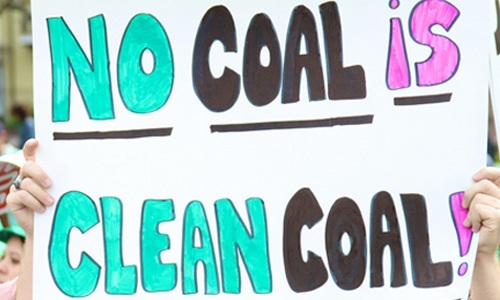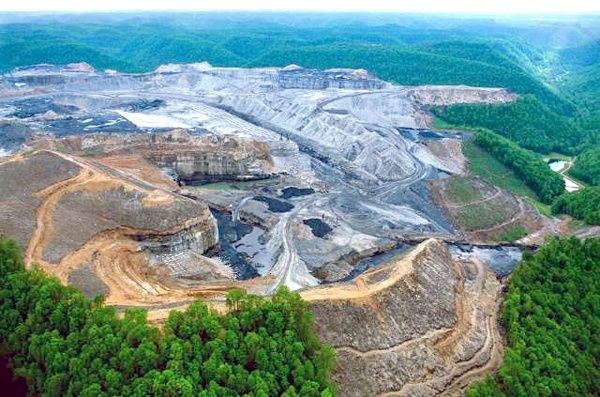

6. The coal industry produces industrial waste too. In 2008, a large retainer pond operated by a coal processing facility ruptured, spilling 1.1 billion gallons of toxic coal ash into the community of Kingston, Tennessee, eventually covering 300 acres of surrounding land. A similar disaster happened again outside Milwaukee, Wisconsin, in 2011 when a We Energy coal ash pond ruptured and 2,500 cubic yards of coal ash spilled into Lake Michigan.
These disasters are a reminder that burning coal isn’t the only problem: every step of the coal production process creates pollution and waste that harms the environment. Clean coal, generally, promises little, if anything, in the way of addressing these other impacts.
7. Mountaintop removal mining. Among the most controversial and tragic mining methods is mountaintop removal, a practice dating from the 1970s where companies use dynamite to literally blow the tops of mountains in Appalachia, not only destroying a landscape 500 million years in the making, but gumming up freshwater streams and even sending massive boulders careening down mountainsides and into communities. Clean coal technology doesn’t even pretend to fix mining processes like this that have huge environmental impacts.
8. Mining coal is dangerous and unhealthy. Beyond harming the environment, coal mining is a dirty and dangerous process for workers. Large scale disasters, like the explosion in West Virginia’s Upper Big Branch Mine in 2010, grab headlines and spotlight the dangers miners face every day. But beyond these catastrophic events, coal mining is a devastating profession for personal health. Small, dark and dusty mines leave lifers with severe back problems and cancers that often end careers and lives too early. A study identifying the least healthy places in America found that the top four were in coal country. Grundy County, Virginia, an area dependent on coal, was dubbed the sickest town in America, with more than 20 percent of people living on disability, many from mining related injuries.
9. Clean coal doesn’t address the coal plants we have now. Even if clean coal became the norm for new electricity generation tomorrow, that doesn’t address the hundreds of existing coal-fired power plants already in operation. Lots of proposed technology would likely necessitate an entirely new processing system. That does nothing to impact emissions from what we’ve already built. If we want to fix what we’ve already got, we’ll need to rely on activists, like the Sierra Club’s Beyond Coal campaign that’s helped close nearly 200 dirty power plants, not clean coal technology alone.
10. Coal is still finite. No matter how much we sanitize coal, the simple truth is we can’t make more of it. Coal may be, as the World Energy Institute describes, the “most abundant” of fossil fuels, but it’s not endless.
Rather than invest significant research and design efforts into finding technology to make a dirty, dangerous energy source less so, it makes much more sense to work toward improving the successful and growing renewable energy technologies already on the market. Wind and solar power are not only truly clean and renewable resources, their industries are growing exponentially as they become price competitive with pollution subsidized fossil fuels.
Achieving real clean energy means letting go of a legacy of fossil fuels and putting our hopes in new, truly clean sources.
YOU MIGHT ALSO LIKE
Why We Need to End Mountaintop Removal Now
10 Greenest Cities in North America
Robert F. Kennedy, Jr. Joins Farmers and Ranchers to Call on Gov. Brown to Reject LNG Exports

 233k
233k  41k
41k  Subscribe
Subscribe 
